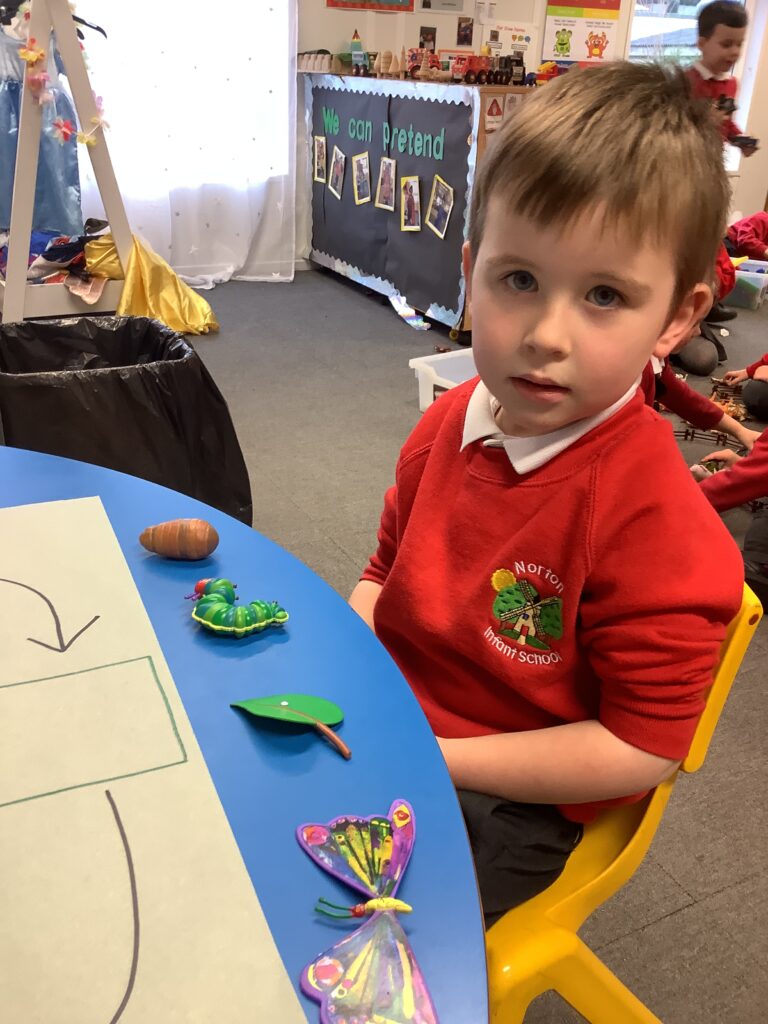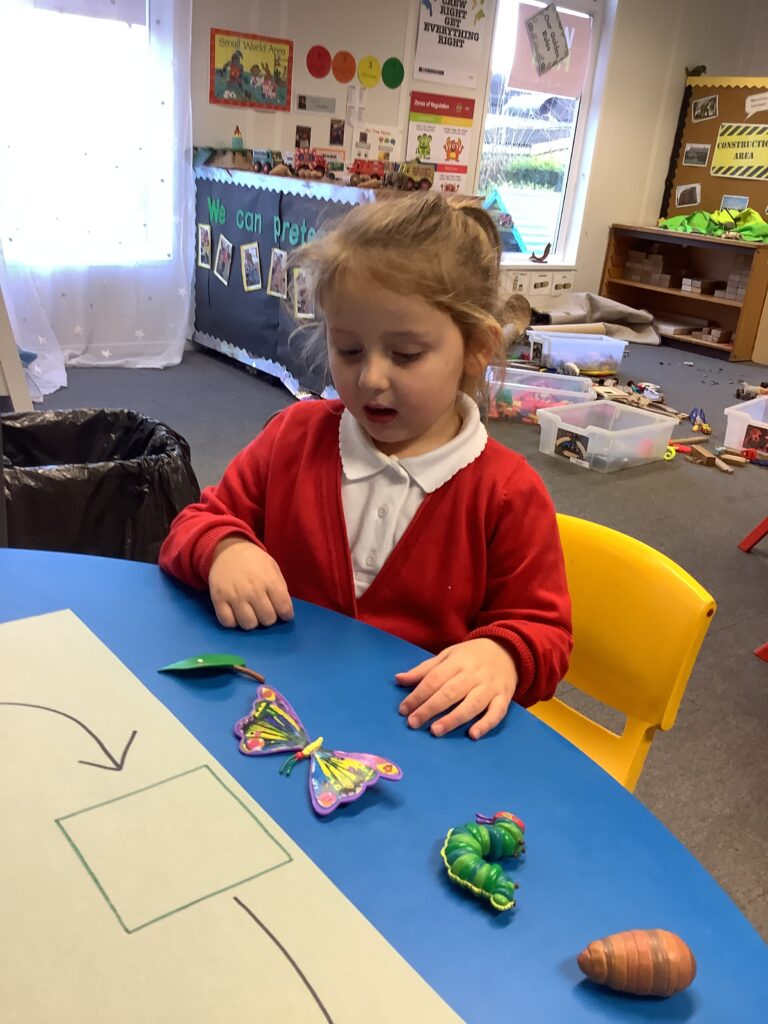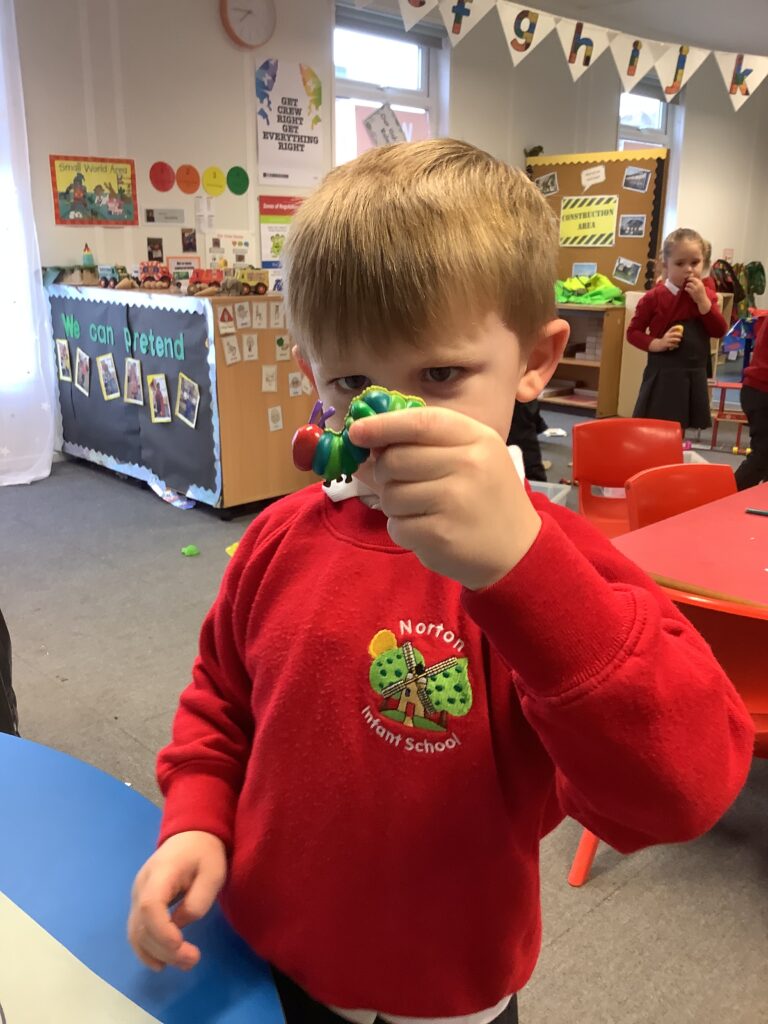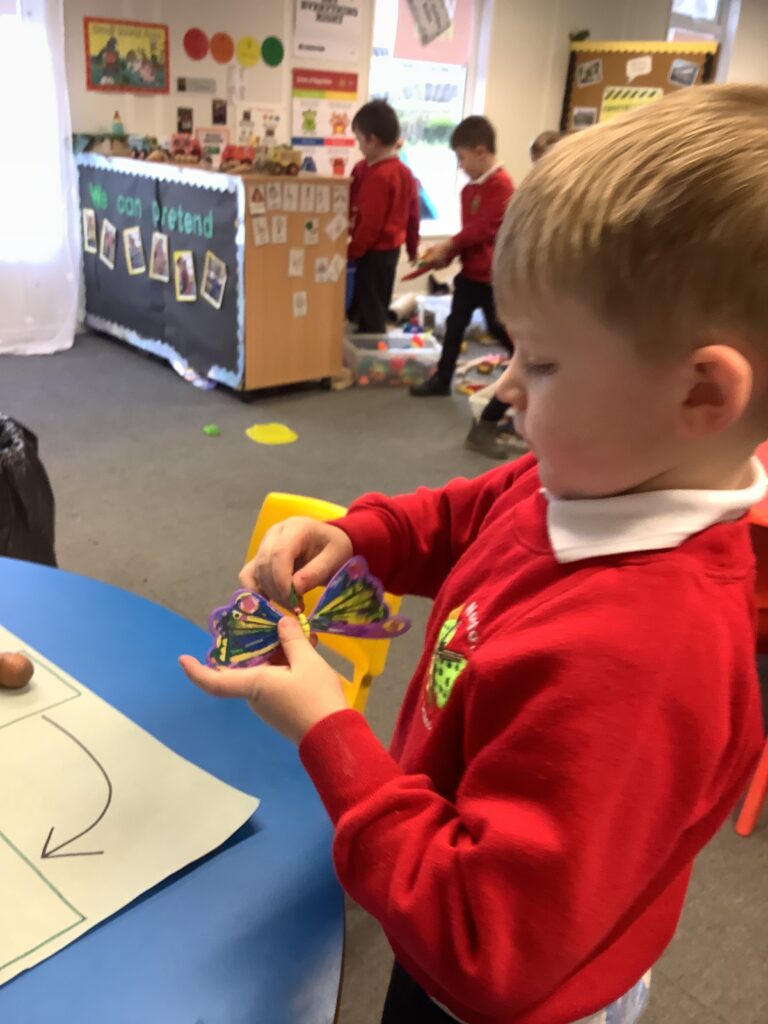This week Nursery have become Scientists by observing the changes that happen in animals as part of our first case study, through our key text The Very Hungry Caterpillar for a second week. The children have closely examined the pictures within our story to work out what the physical changes in the caterpillar are. An egg, a tiny caterpillar, a cocoon or chrysalis and then a butterfly. Some of the words used to describe the above were as follows;
Egg – “Circle”, “Tiny”, “Bubble”, “White”, “Spot” and “Dot”.
Caterpillar – “Tiny”, “Big, fat caterpillar”, “Wriggly”, “Green” and “Bumpy”.
Cocoon – “Like a sleeping bag”, “shell”, “like a stick”, “Wood” and “egg”.
Butterfly – “Rainbow”, “Beautiful”, “Wings” and “Flappy”.
Nursery read another text which focused more on the life cycle and explained how the changes take place called Little Caterpillar by Autumn Publishing. I then modelled to the children how to draw a life cycle to help embed the cycle in their minds and demonstrate it was a loop (cycle) that started over and over again.
In our provision the children had the opportunity to explore and examine toys representing the life cycle.
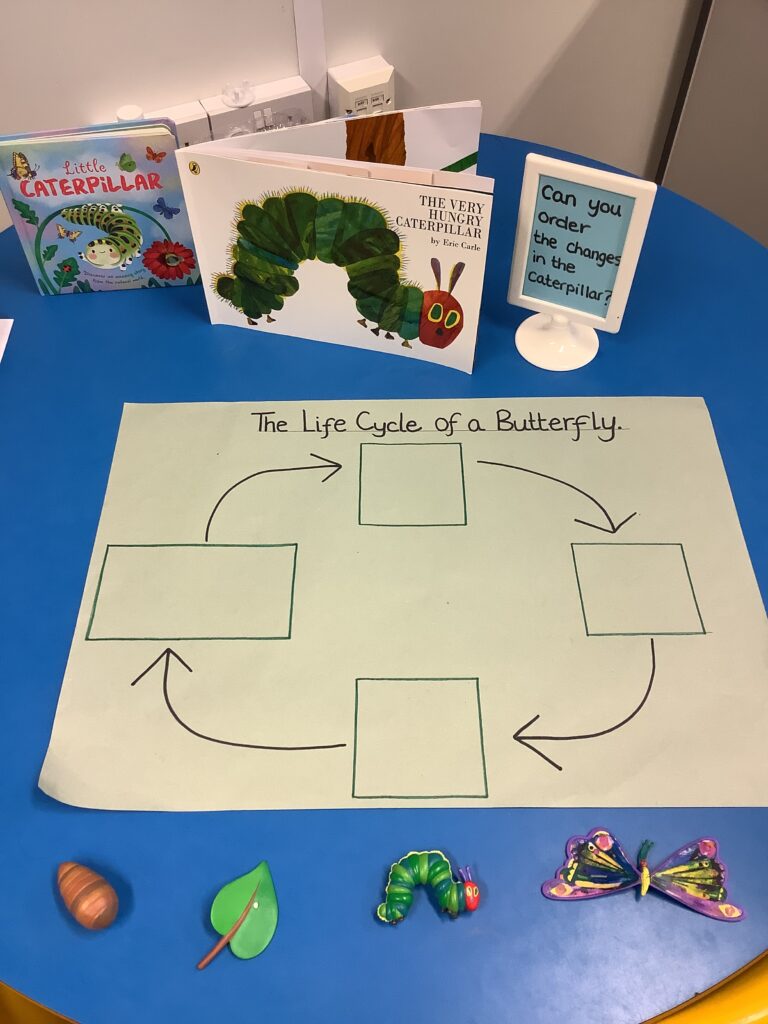
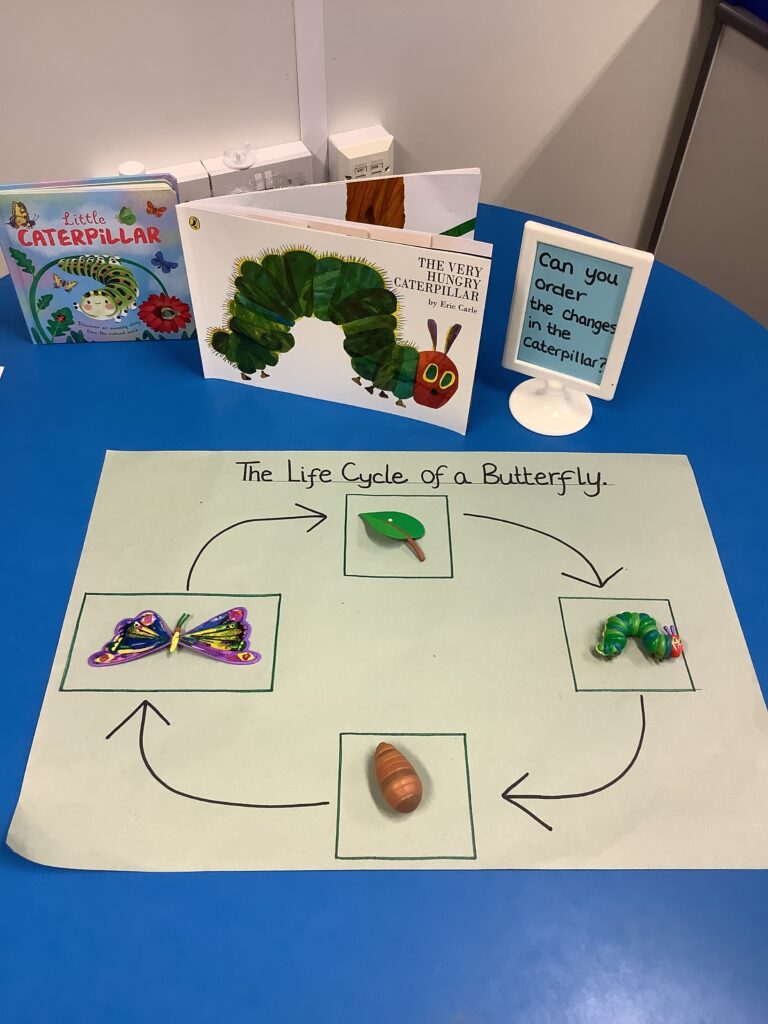
We consolidated the events that helped make the life cycle process possible by playing the fruit game. The caterpillar ate lots of fruit to be able to make him grow. The children had to listen and run to a fruit called out by their grown up as part of activating our brains, it was lots of fun!
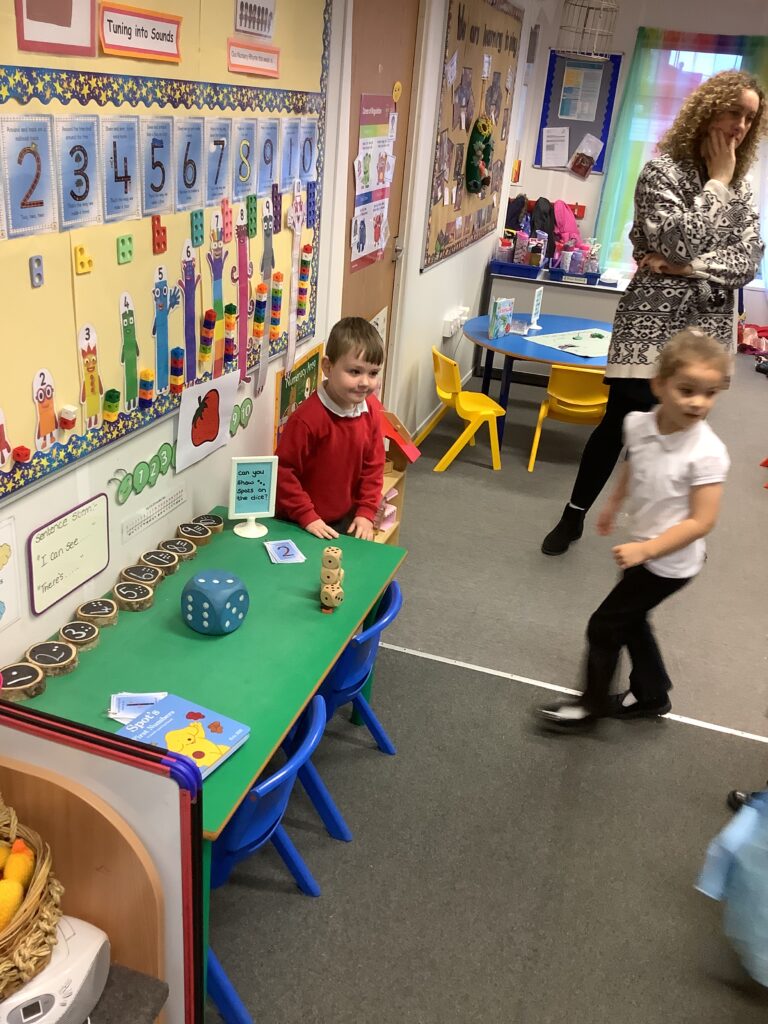
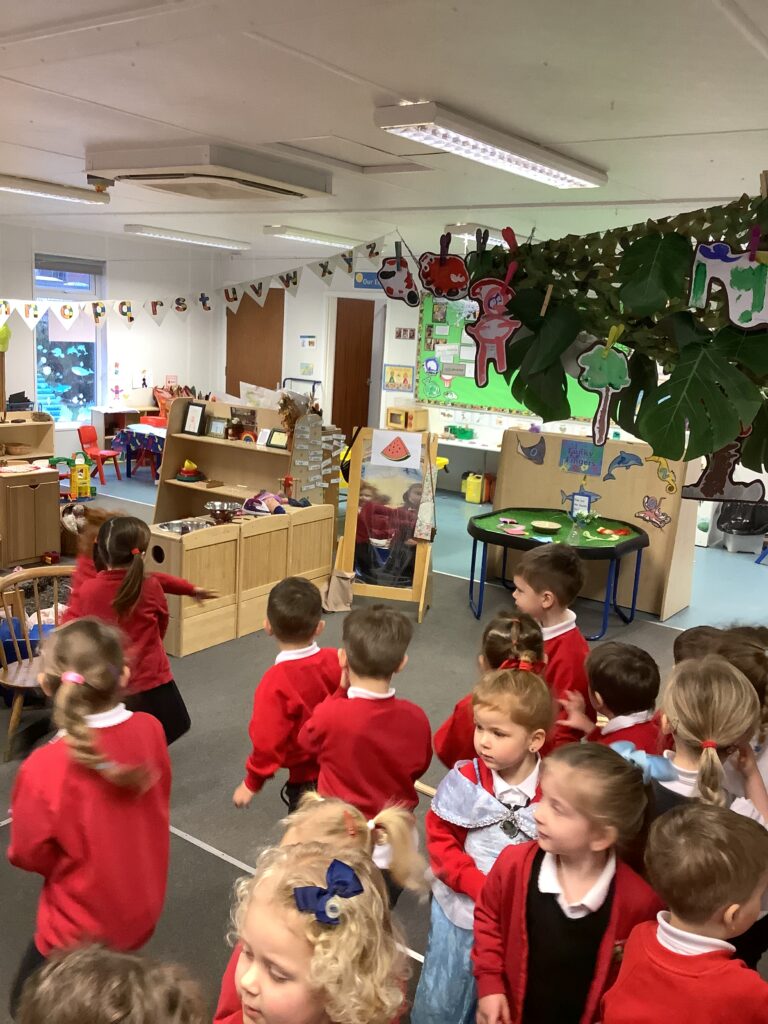
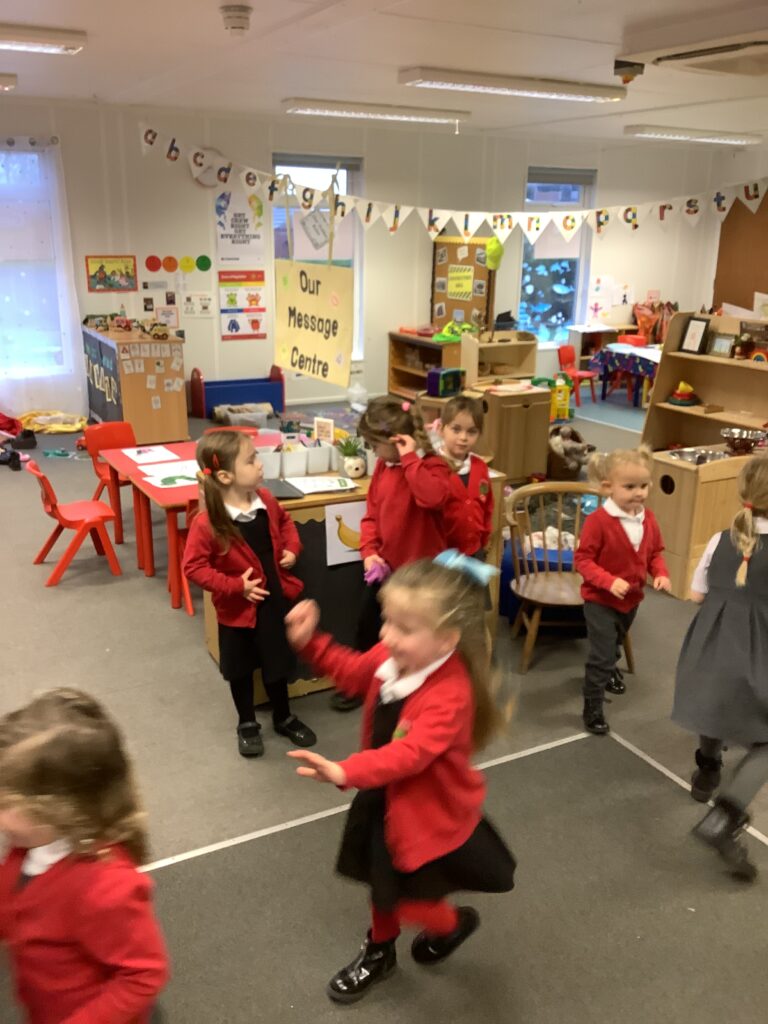
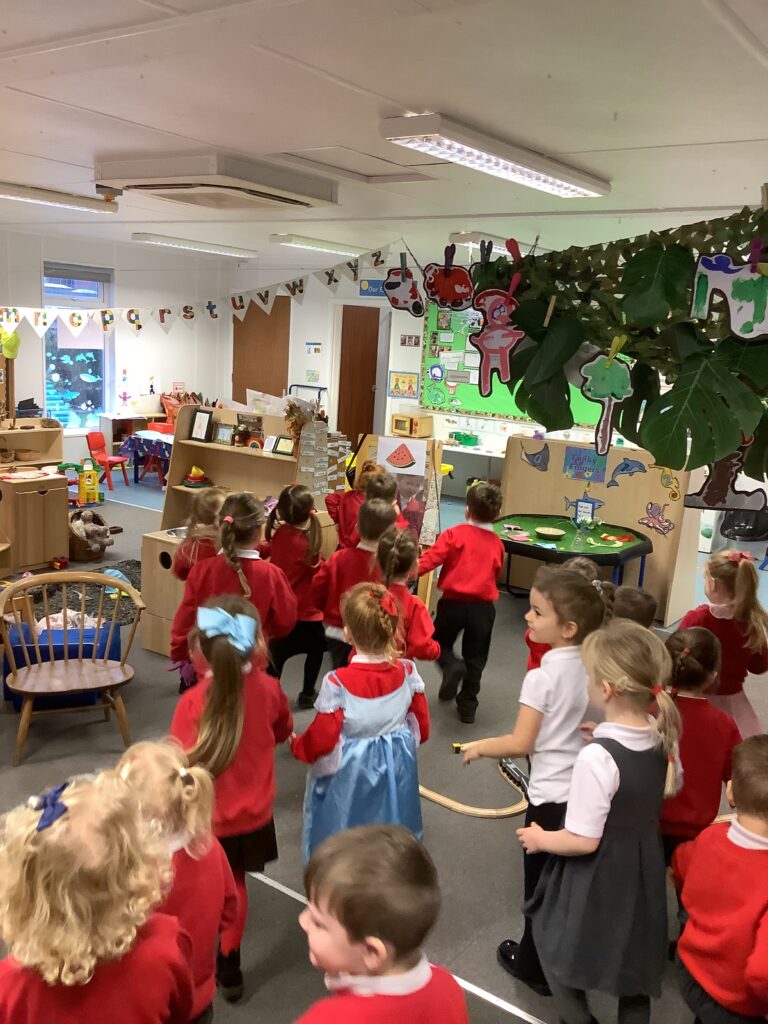
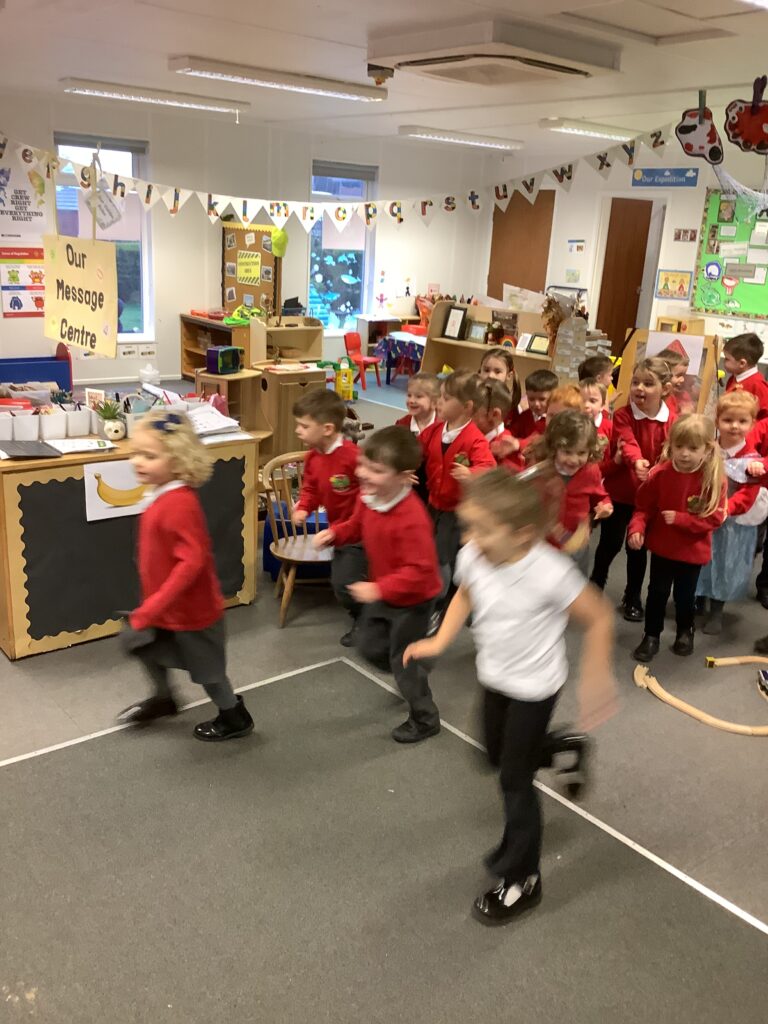
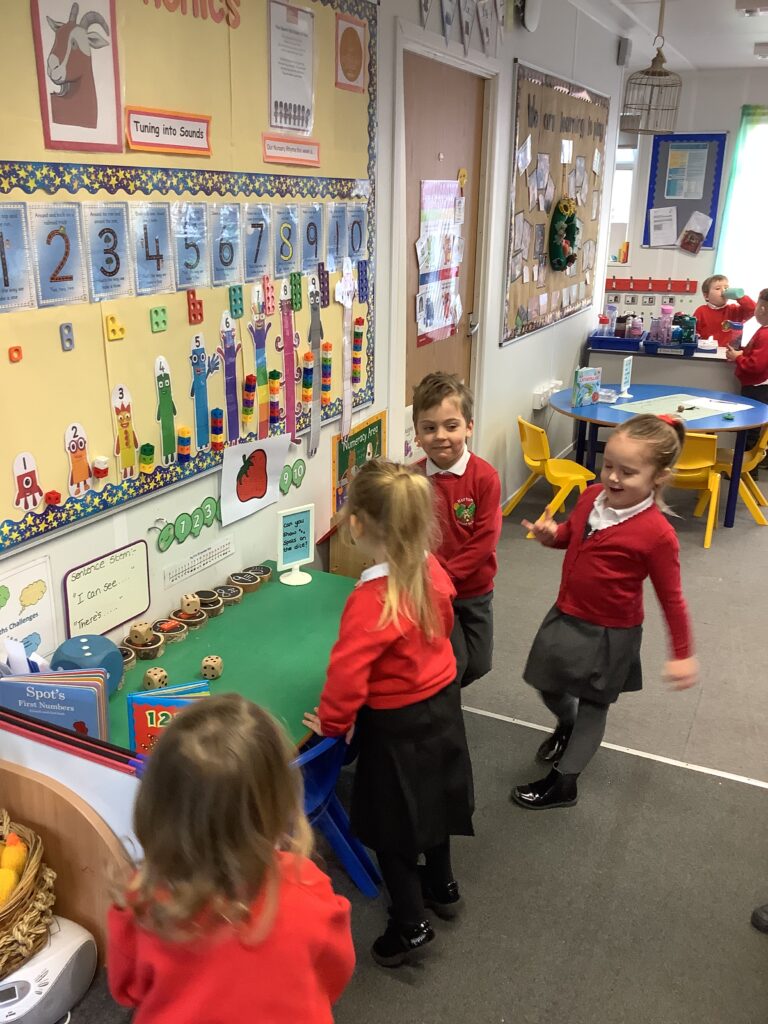
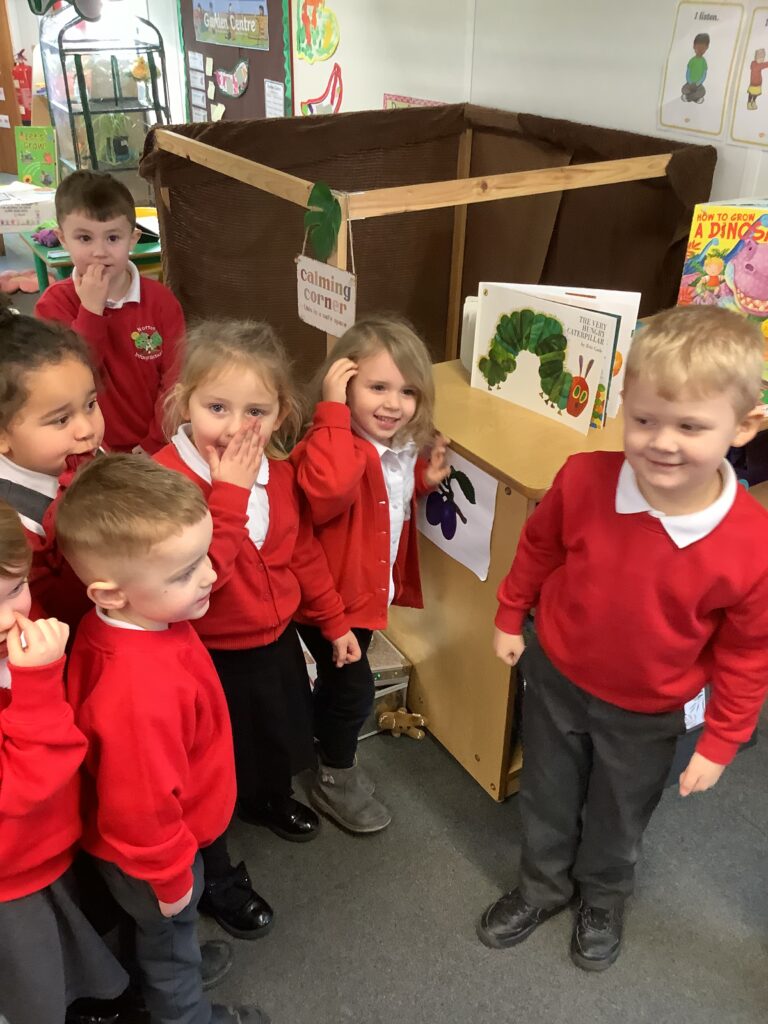
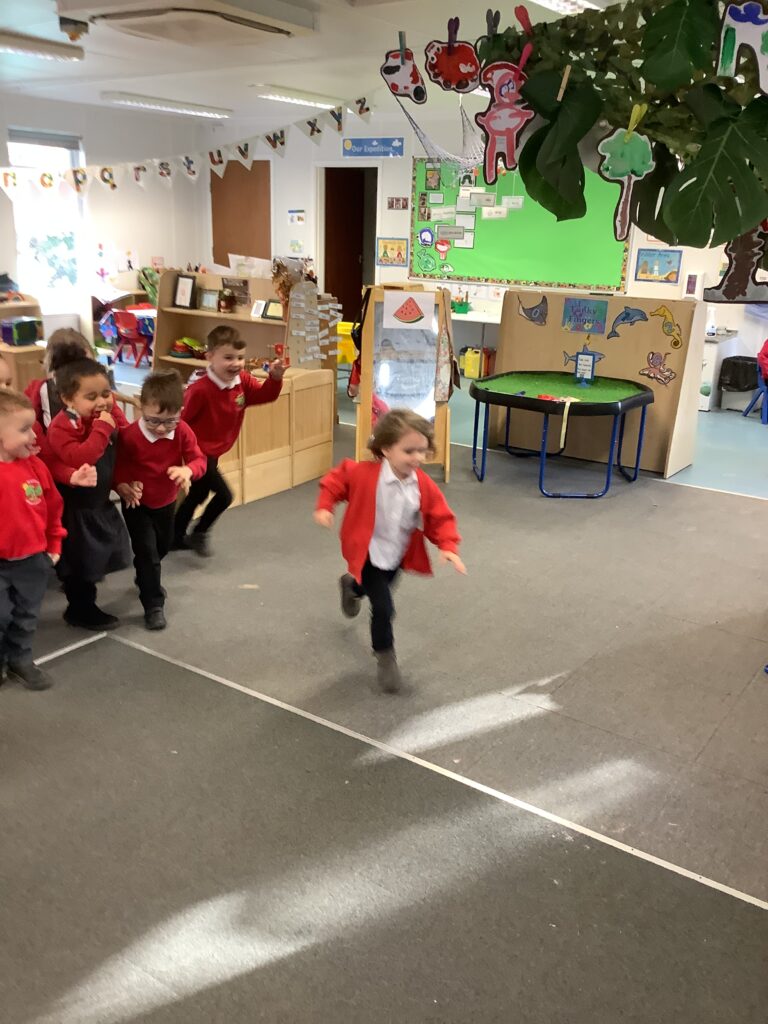
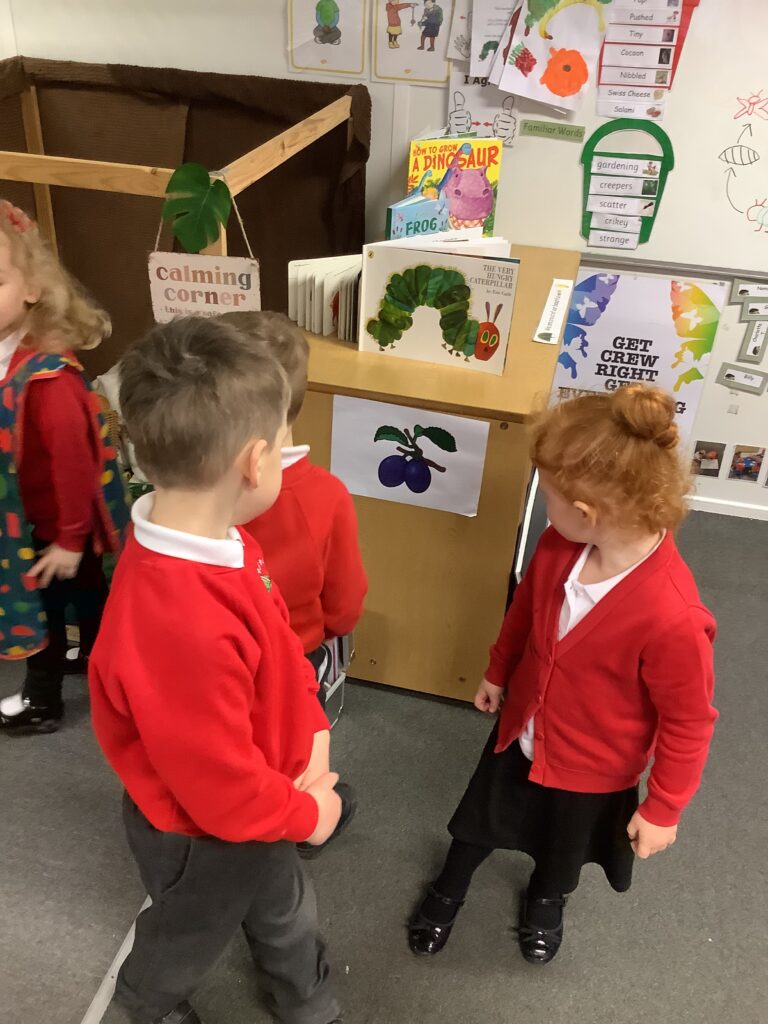
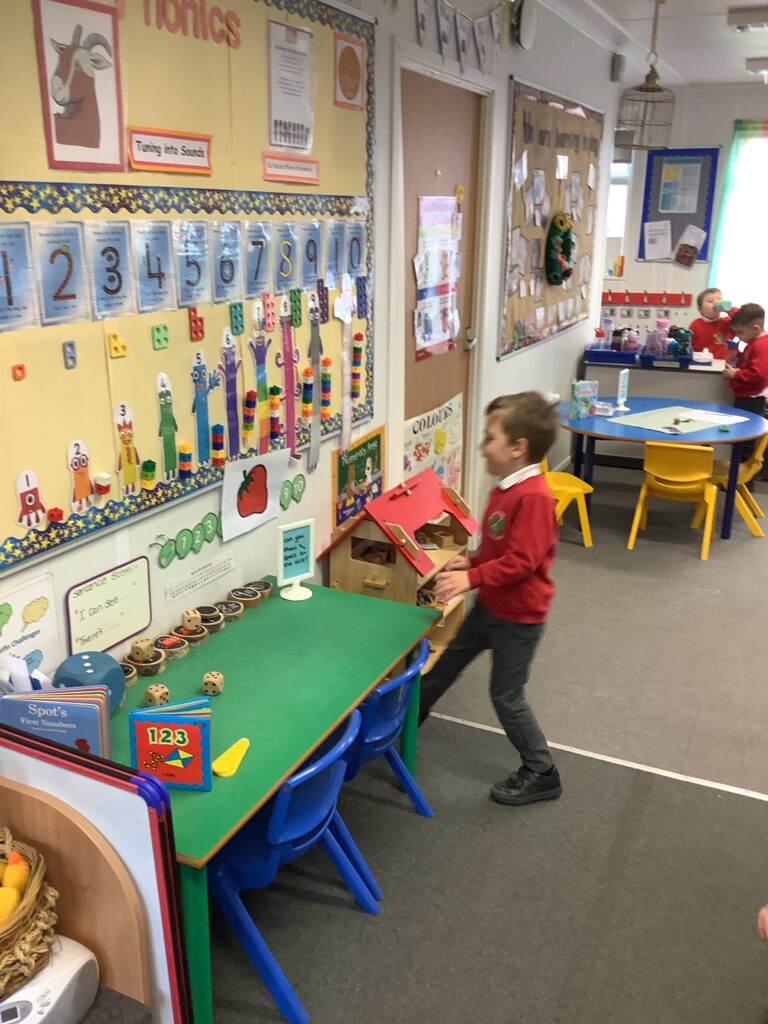
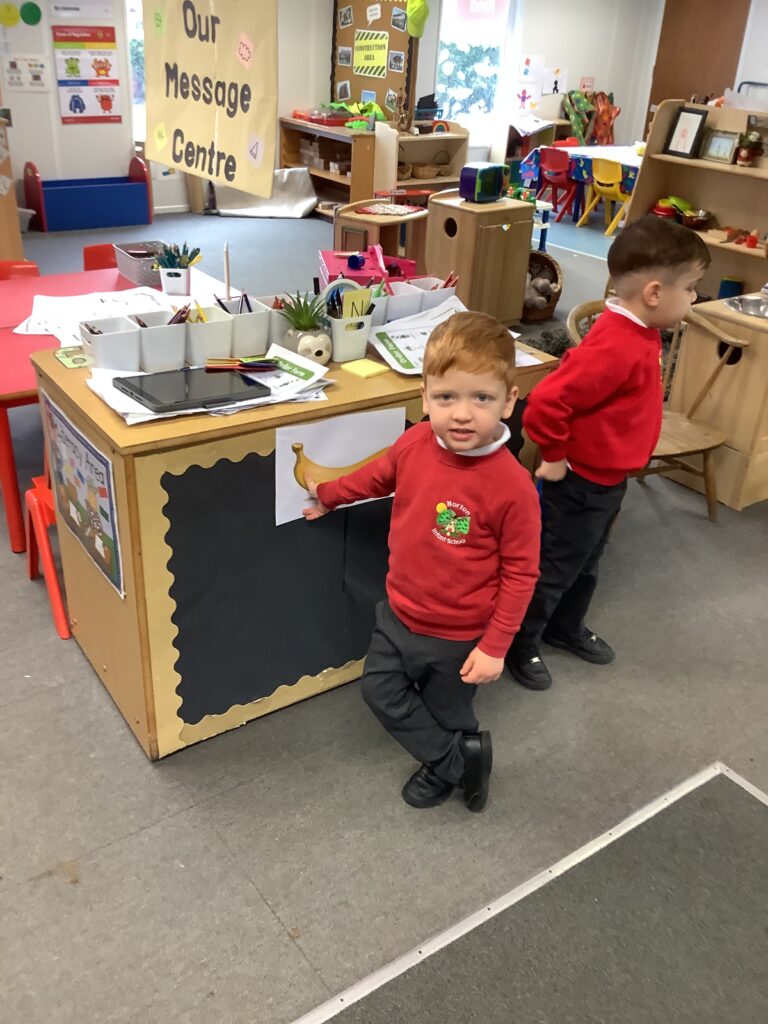


The children also revisited their previous learning from the week before when they painted beautiful pictures of the fruit. They each looked closely at their pictures and chose at least one piece of fruit and (with support and modelling) began to write the first letter sound for that item using their phonetic knowledge. Eg; Banana – b, Apple – a or Strawberry – s.
In provision the children independently used collage to create beautiful pictures of fruit and the caterpillar at various stages. They also created beautiful butterflies in the play dough and on the painting easel.
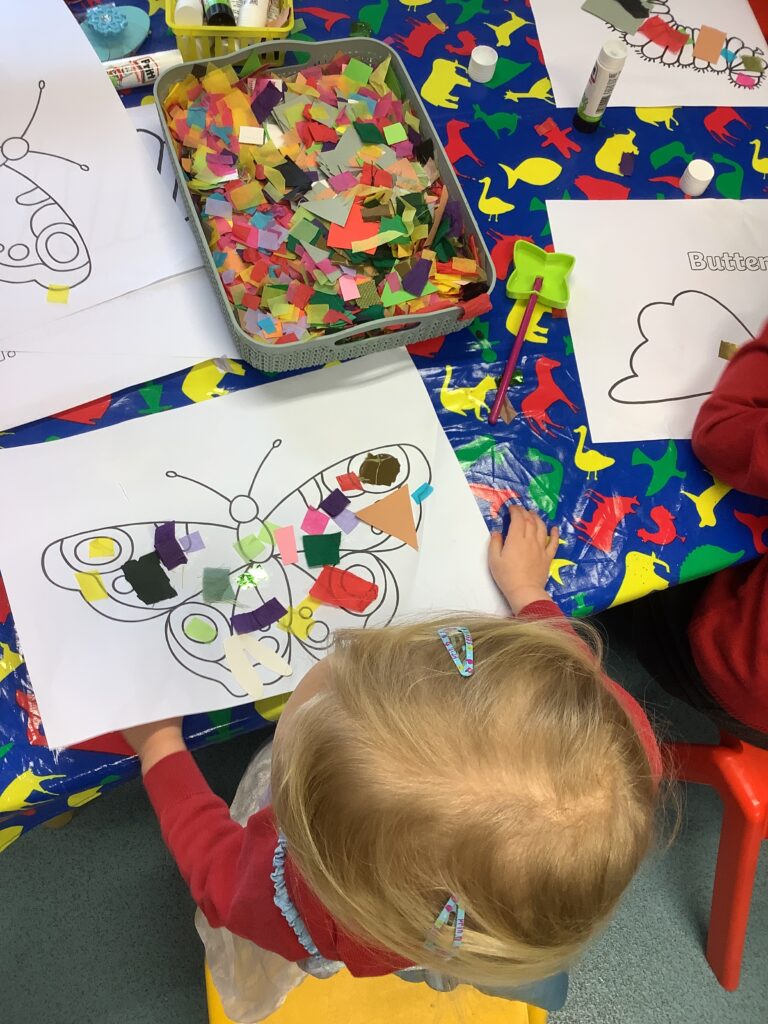
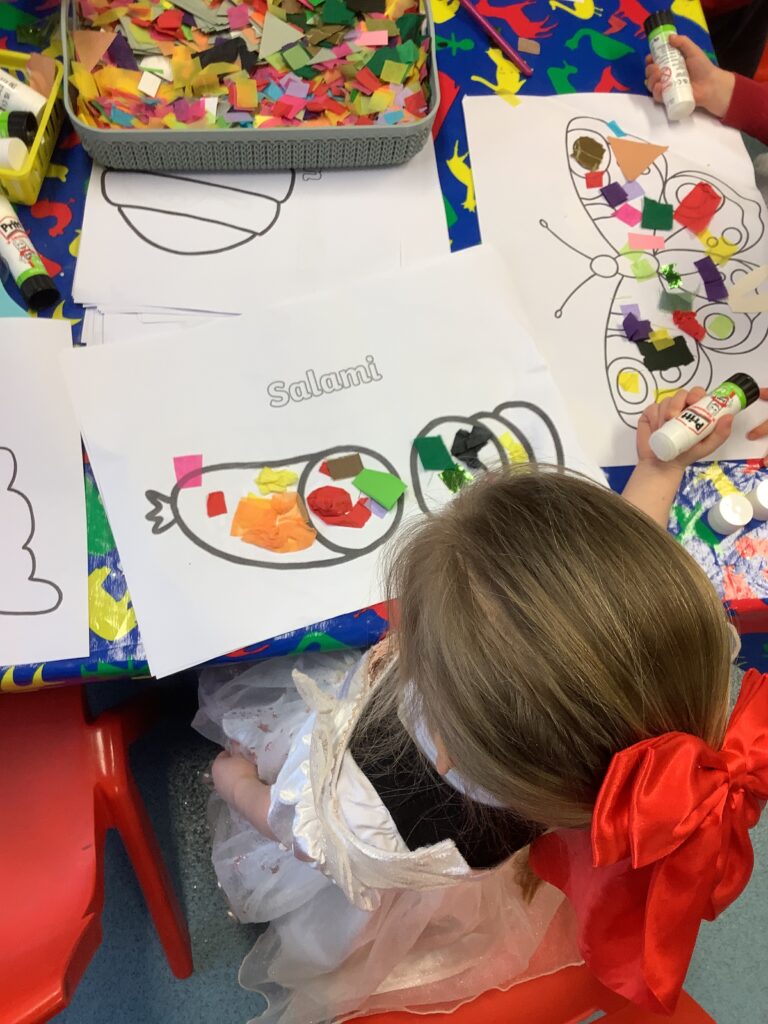
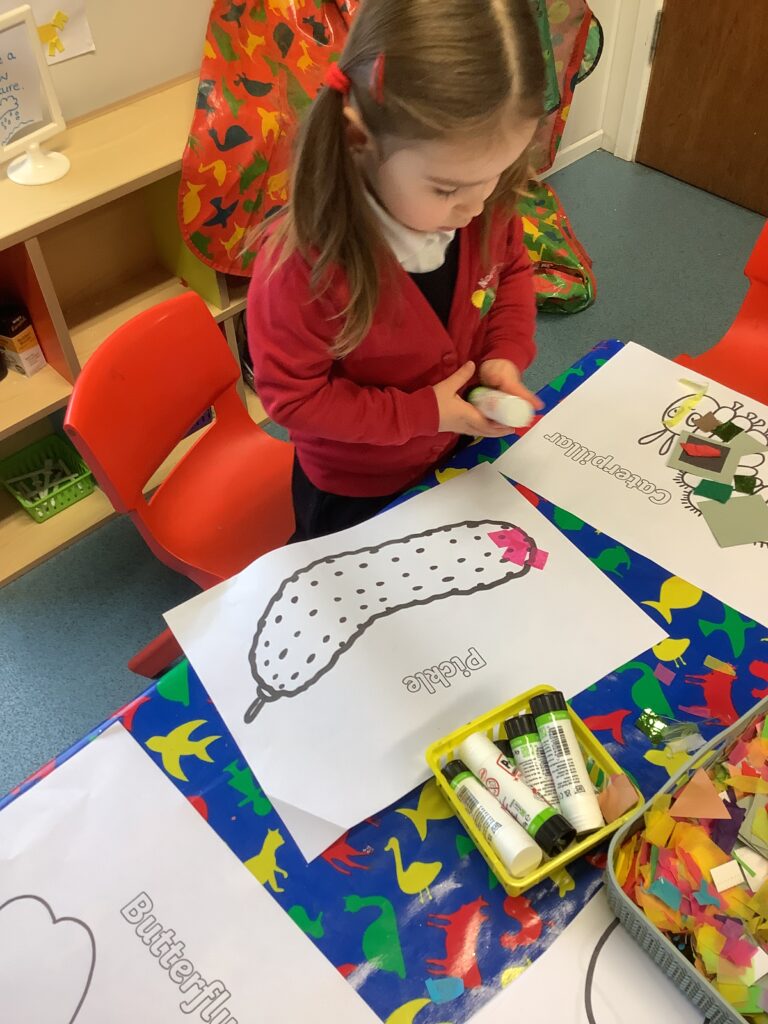
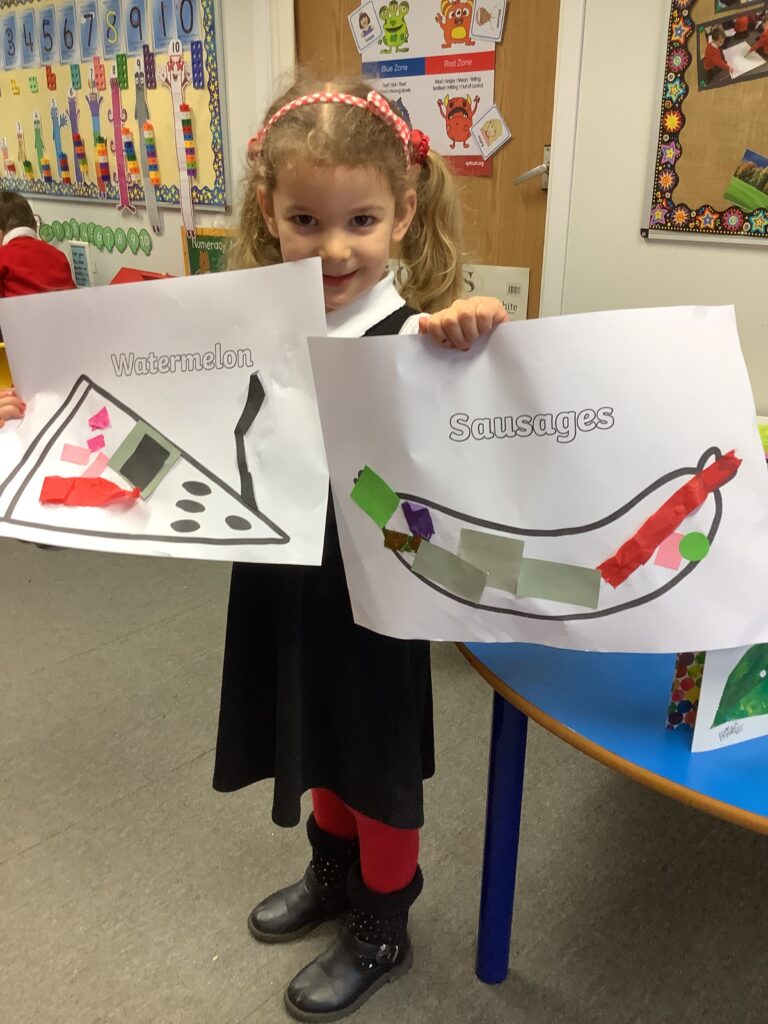
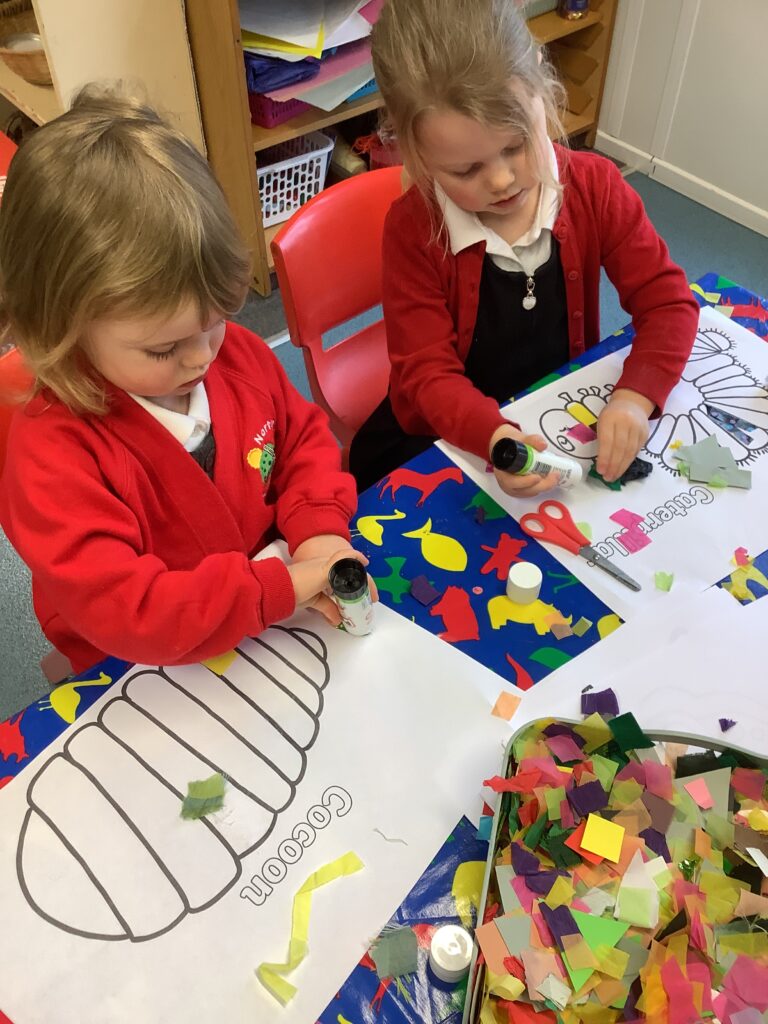
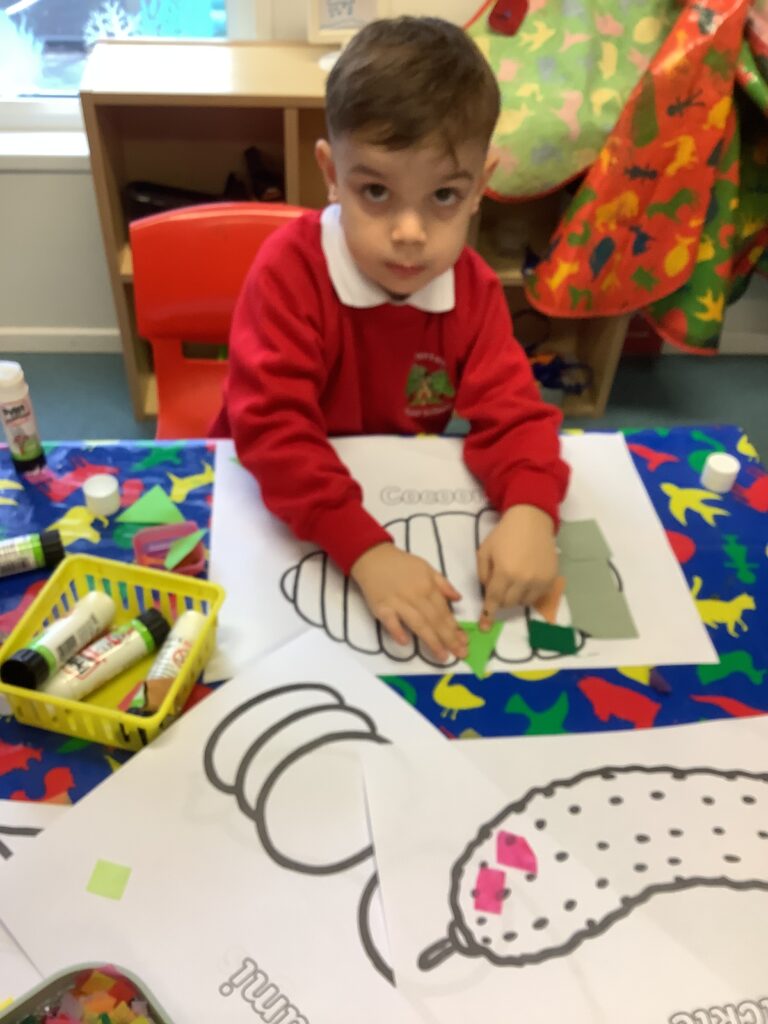
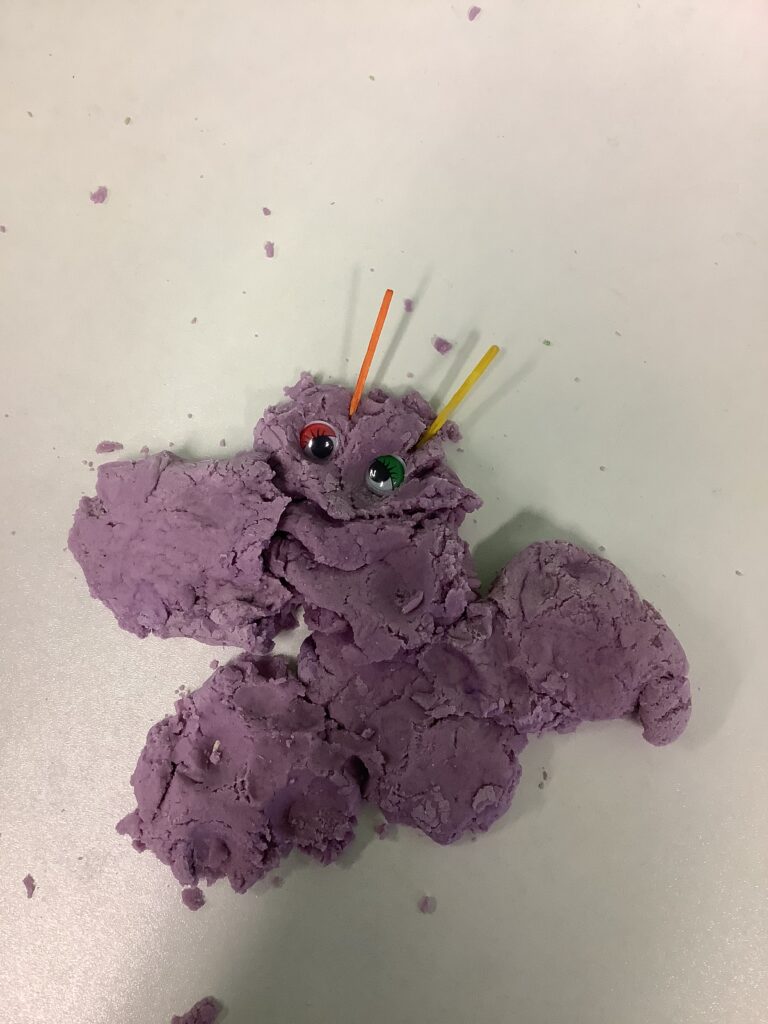
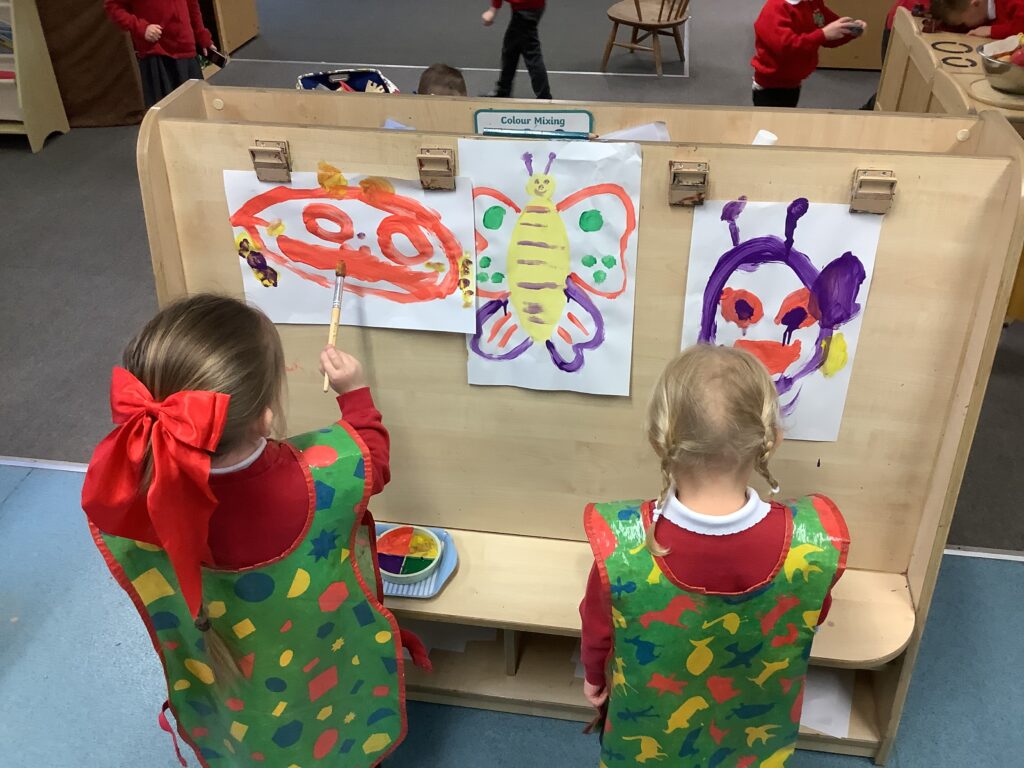
As the week progressed the children each worked with an adult and explained the process of the butterfly life cycle using the toys as physical props to help organise and consolidate their understanding of the life cycle. They were each recorded and were able to recall key vocabulary and other significant events within the story. Such beautiful work!
